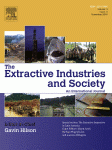 John Baeten, IHA PhD Candidate, recently had a post published by NiCHE (Network in Canadian History and Environment) for their “Seeds: New Research in Environmental History” Series, titled: “Busting Ghosts: Building an HGIS to Reveal Historical Mine Waste Producers and Develop Strategies to Mitigate Future Risk”
John Baeten, IHA PhD Candidate, recently had a post published by NiCHE (Network in Canadian History and Environment) for their “Seeds: New Research in Environmental History” Series, titled: “Busting Ghosts: Building an HGIS to Reveal Historical Mine Waste Producers and Develop Strategies to Mitigate Future Risk”
